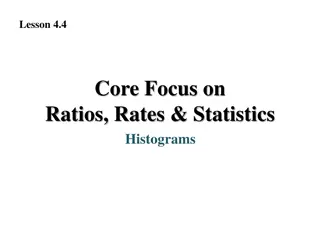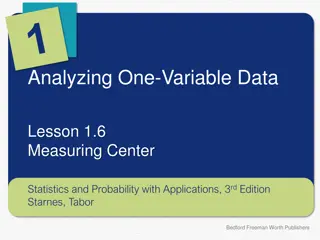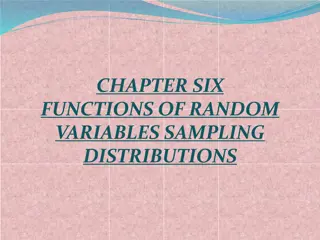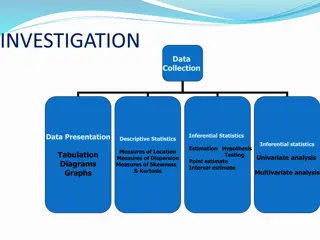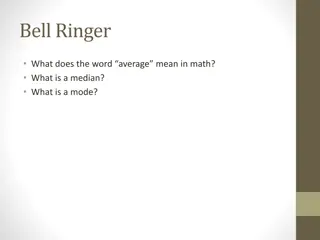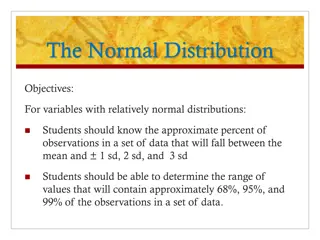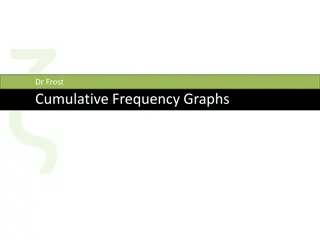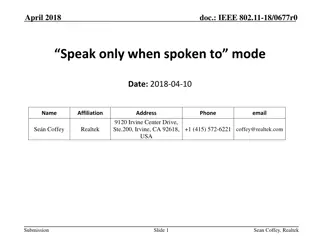Understanding Mean, Median, and Mode in Data Analysis
Explore the concepts of mean, median, and mode in data analysis through engaging visuals and interactive exercises. Learn about the different types of averages, how to calculate them, and their significance in understanding datasets. Practice finding the mean of various sets of data and solve real-world problems involving data collection and sharing. Enhance your statistical skills and grasp the fundamentals of presenting and measuring data effectively.
Download Presentation

Please find below an Image/Link to download the presentation.
The content on the website is provided AS IS for your information and personal use only. It may not be sold, licensed, or shared on other websites without obtaining consent from the author. Download presentation by click this link. If you encounter any issues during the download, it is possible that the publisher has removed the file from their server.
E N D
Presentation Transcript
Mean, Median & Mode If any of the links don t work: 1) Right click on the image and go to open hyperlink 2) Copy the address and paste it into the address bar on the internet 3) Google it! We ve included the image so you will be able to find it more easily.
Presenting and Measuring Data Important vocabulary to learn for the week! Click to check you know the definition. Data Information that has been collected by counting or measuring. Scale Points on the axis with equal intervals. Axis A graph has two perpendicular lines (lines at right angles). The horizontal axis is called the x-axis. The vertical axis is called the y-axis. Graph A diagram showing data. Frequency The number of times an event occurs. Line graph A graph where straight lines join points together to show the data. Average Loosely means an ordinary or typical value. There are 3 types of average that we learn about: mean, median and mode. When just the word average is used, it refers to the mean. Mean The sum of a set of numbers, or quantities, divided by the number of terms in the set. Example: The arithmetic mean of 5, 6, 14, 15 and 45 is (5 + 6 + 14 + 15 + 45) 5 i.e. 17.
Now for a song follow the links below! Then this one you can sing along, and the diagrams are really clear. This one first for the song... Melody Treehouse, averages https://www.youtube.com/watch?v=z 4nlVZkm4eQ Sparky Teaching, averages https://www.youtube.com/watch ?v=gB_033ID7i8
Find the Mean DO IT! Find the mean of each set of data: 1. 6, 3, 9, 7, 5 6 2. 1.3m, 0.7m, 2.6m, 2.3m, 0.4m, 1.7m 1.5m 3. 26, 27, 35, 18, 23, 27 26 4. 1.34, 89p, 1.57, 2.46, 2.09, 59p What do you need to think about carefully when finding the mean with this set of data? All or p so 89p = 0.89 1.49 Make some sets of data for a partner to find the mean. Answers
TWIST IT! How Much? Five classes of children collect some money to share equally with five local charities. Four of the classes record how much money they have collected, but the fifth class forgot to record theirs. Here are the four classes collections: 34, 29, 18, 27. The total is shared equally so each charity receives 25. How much did the fifth class raise? 17 Write a similar problem for a partner. Answers
Play print out and play the game in the Lesson 3 folder, or make up your own averages game to play.



